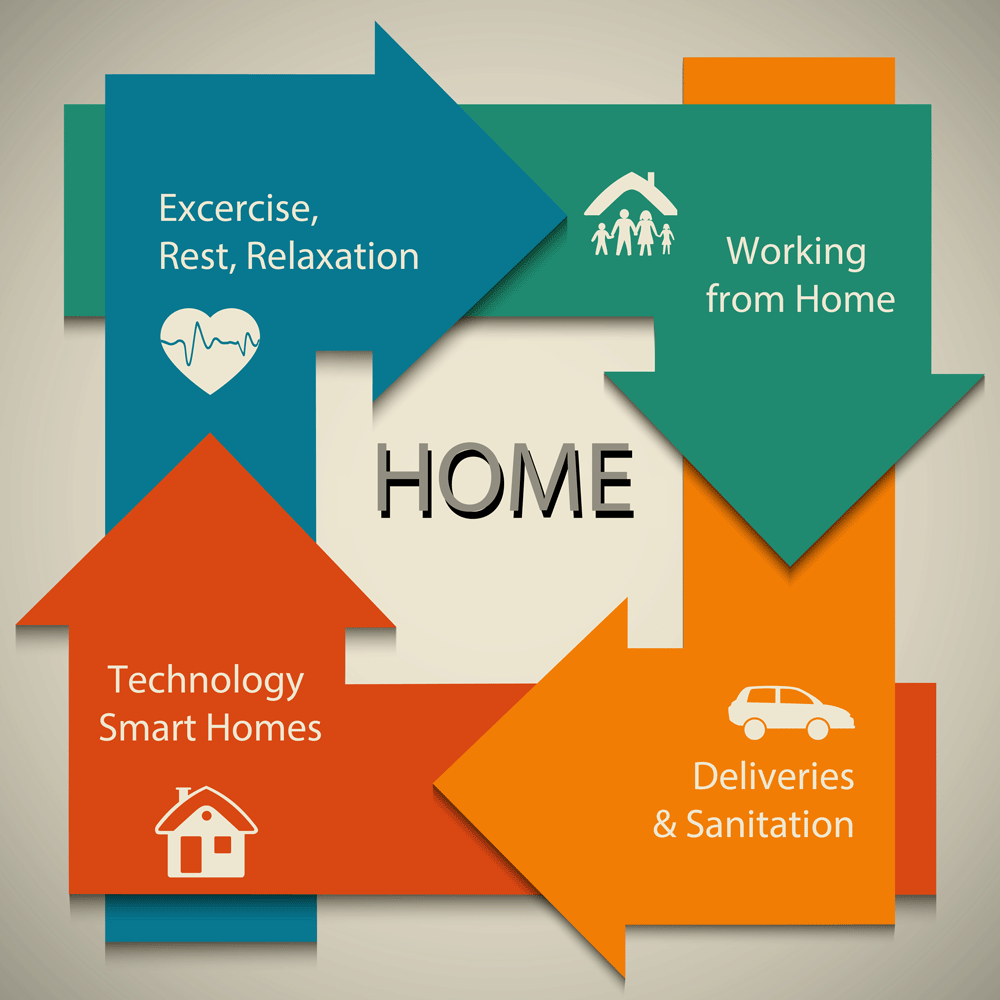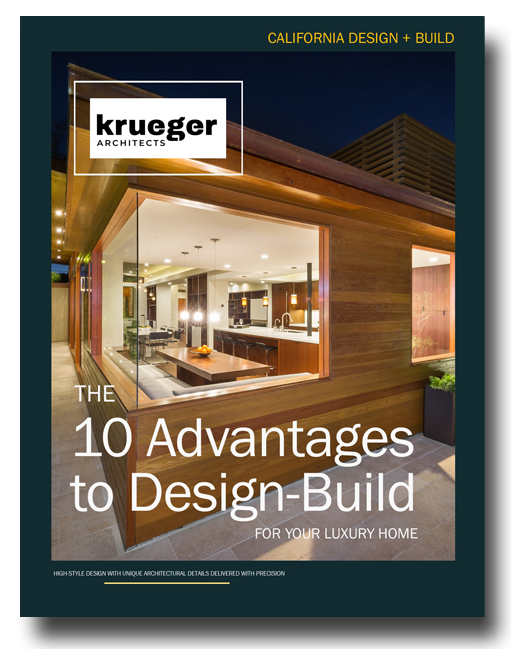The worldwide COVID-19 pandemic of 2020 has changed the way we live. People are confined to their homes and with that new challenges for the home environment have arisen. This includes working from home, managing kids in the same space, home deliveries, sanitation needs, and a new way we think about the ‘great outdoors.’ With all these changes and needs to adapt, now, more than ever, we need to adjust our homes to met new daily demands. While some of the changes in home design are temporary, many of the new ways we are adapting to live in our homes will likely be permanent and continue well after the pandemic is over.

Our homes play a much greater role in our daily lives than ever before. For most of us, we were used to leaving our doorstep everyday, heading out to work, and then back home at night for a meal, family time, and to sleep and then start the day over again. For those who are able, we are now doing all of our daily activities within our home and we need them to adapt to our daily needs. The following are just some of the ways that COVID-19 is changing home design.
Working from Home
Home Office
Many of us may have worked from home occasionally before–maybe at the kitchen table or sitting on the couch, but when COVID hit we were scrambling for places within our homes for all family members, including kids, to work from home. Now that we see this will be a lasting trend, we want more permanent space with a desk with proper ergonomics and space for monitors, and to spread out paperwork. Attractive backgrounds and ample lighting have become an essential for video conference calls. Who new about ring lights before we were video conferencing all day?
Increased Organization
Clutter can cause anxiety and discomfort. Home organization through built-in shelving, additional storage, and space for keeping items well organized is the best way to de-clutter and keep your sanity. Extra countertop space for wiping down groceries is increasingly needed, as well as extra storage space for stocking up on groceries for an emergency reserve of food.
Kids & Pets Space
Rather than sharing the same space for work and play, just like adults, children need a fun and safe place for an eye and brain break from digital learning. They also need space to play and move those big body muscles since so many are sitting down for hours of virtual school at a time. It’s also critical that they have a space that’s separate for when mom or dad are working and need to have uninterrupted space for their video conference calls. Our pets also need somewhere to go, quite literally.
Adaptable, Flex Space
Making space for the increasing number of activities and functions in the home can be a challenge. Create spaces that can accommodate multiple activities. Adjustable walls and partitions can transform even modest spaces into various dedicated areas of activity along with using storage and organization to quickly transition a flex spaces.
Deliveries, Sanitation, and Selecting Materials with Natural Anti-bacterial Properties
Protected Front Entry Porch
Delivery is now common for both food and goods. Providing a protected area for receiving deliveries is essential. Consider counter space or a table to set packages on—ideally, a covered space to protect goods from the sun and the elements.
Disinfection Entryways
Disinfection stations could be at the front entry or mudrooms or near an entryway to wipe down deliveries & groceries, change shoes, be a space to change out of clothes worn in public areas, or to simply wash & sanitize your hands before entering.
Antibacterial Materials
There is increasing consideration for durable materials that can handle repeated applications of cleaning products and disinfectants without wearing down. There are a few materials that are more sanitary than others, including copper, brass, and bronze that kill a wide variety of microorganisms. Quartz is one of the hardest of the non-precious stones and one of the most sanitary due to its not porous surface. Materials like bamboo and cork can also stop bacteria from growing.
Using Technology to Make Life Smarter
Smart Kitchens
The requests for Smart Kitchens is accelerating. Hands-free technology is used to control lights, faucets, and trash cans. Voice-activated, connected devices allow remote control of things like appliances. Apps that connect to delivery services make grocery planning easier.
Mechanical Air Filtration Systems
With a focus on air quality, more people are looking to limit the amount of unfiltered air entering their homes. Air purification systems that take outside air and recondition it and supply fresh air into the home will become more common. Also, radiant flooring that does not need forced air systems for heating and air conditioning will become a sensible choice.
Exercise, Rest, and Relaxation
Private Outdoor Space
Being increasingly indoors has increased the appreciation of the outdoors and nature. Because outdoor spaces do not guarantee safety during a pandemic, private outdoor spaces are increasingly common. Integration of the indoors and outdoors through porches, small yards, roof gardens, balconies, and glass to visually bring the outdoors inside.
Hobby Spaces
As the number of activities away from the home is limited, there is an increasing demand to have dedicated spaces to explore and organize new hobbies. This can be the yard, garage, a dedicated room, or usable attic space.
Home Gyms
A dedicated space for exercise while gyms are closed are making home gyms not only a luxury but for many a necessity.
Above all else, in a world of uncertainty, we still look to our homes as an escape from the outside world. We will continue to view them as our place of respite and place of calm and security. Just as the Sept. 11th, 2001 attacks changed design and architecture with an increasing focus on security and safety, COVID-19 will leave a legacy on the design of buildings and homes long after a vaccine is discovered.






